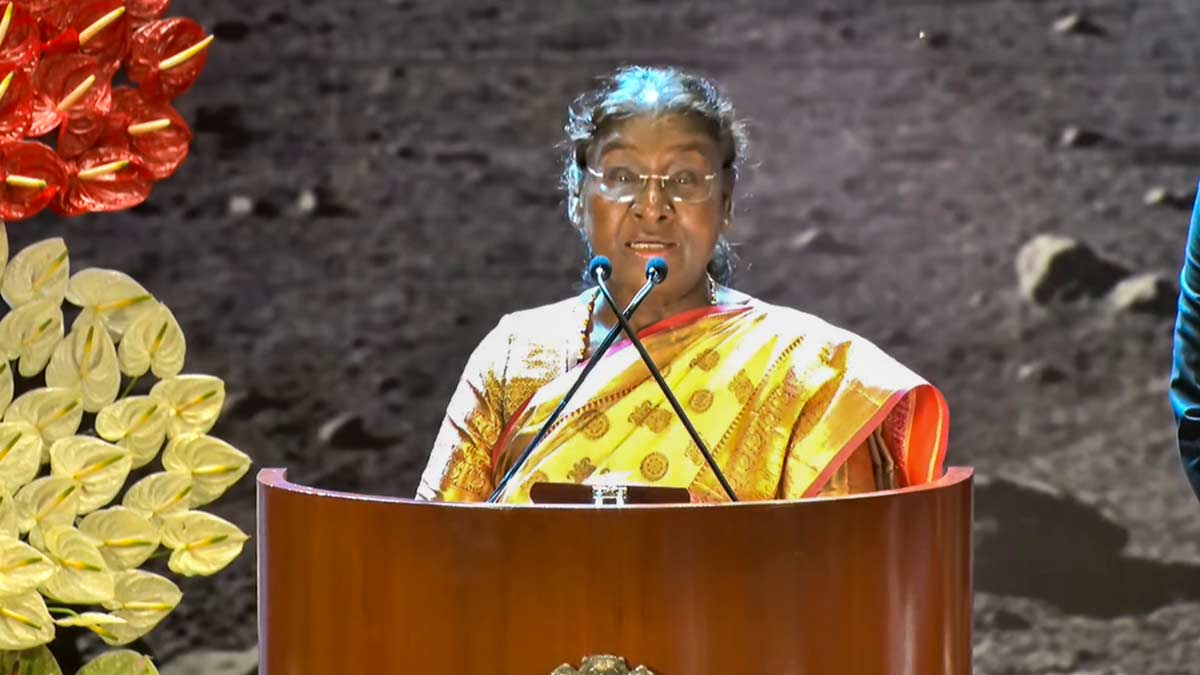Presidential reference: 'Can governor's inaction paralyze state legislatures?', asks CJI-led bench | What happened in SC today
 President Droupadi Murmu | PTI
President Droupadi Murmu | PTI
The Supreme Court’s constitution bench on Thursday resumed hearings on a Presidential reference that has put the spotlight on one of the most contested questions in Indian federalism: can a governor sit indefinitely on Bills passed by a state legislature, and if not, what remedy exists?
The Centre, represented by Solicitor General Tushar Mehta, strongly argued that Article 200 of the Constitution, dealing with governor's assent, was non-justiciable. To impose judicially enforced deadlines, he said, would amount to redrafting the Constitution. “The exercise of high plenary power by coordinate constitutional authorities is not justiciable,” he told the bench, invoking the doctrine of separation of powers. Mehta stressed that time limits apply to statutory authorities, not to composite constitutional authorities like the president or the governor.
Mehta cited precedents—Shamsher Singh, Nabam Rebia, and M.P. Special Police Establishment—to argue that a governor’s discretionary power is constitutionally recognised in certain circumstances. Drawing from the Constituent Assembly, he quoted Mahavir Tyagi’s warning that democracy was a wild beast needing checks, and Pandit Thakur Das Bhargava’s vision of the governor as guide, philosopher and friend. The governor, he insisted, is no showpiece, but a balancing figure entrusted with safeguarding constitutional principles even against the political impulses of elected governments.
But the bench, led by Chief Justice of India B.R. Gavai, was unconvinced that governor's inaction can be insulated from judicial scrutiny. The CJI posed the central question: if a governor simply refuses to act, are the courts really powerless? “When this Court has in the past set aside the very constitutional amendment which had limited the power of judicial review as a violation of the basic structure, can we say this Court will be powerless in the face of inaction by a constitutional authority like the governor?” he asked.
CJI Gavai, in a pointed intervention, pressed the consequences further, “Suppose the governor merely sits on Bills for four years. What happens to the democratic set-up of the government, what happens to the will of the two-thirds majority of the legislature of a particular state?”
SG’s reply was equally sharp: Can judicial inaction then compel the president to take action in a pending case? Every institution, he argued, has built-in silences and political checks. “It cannot be that every problem has a solution only at the doors of this Court, and political and democratic solutions are not solutions,” Mehta said.
Justice Narasimha asked whether leaving such problems entirely to the political sphere would risk a logjam in Centre–state relations. If a governor can withhold a Bill indefinitely without returning it to the Assembly, “won’t the legislature become defunct?” the CJI pressed. Mehta countered that not every state rushes to court, many take diplomatic measures instead, through consultations and negotiations. The Court, he noted, is not flooded with litigation on governor delays, suggesting the problem is not as endemic as petitioners claim.
Still, the bench appeared unconvinced that politics alone could be the safety valve. Justice Gavai reminded that while elected representatives are accountable to voters every five years, the governor is not answerable to the people. That very vulnerability, he implied, strengthens the case for judicial oversight.
This clash of views reflects a deeper federal tension. Opposition-ruled states have long complained that governors appointed by the Centre stall key legislations—sometimes for years—effectively paralysing state governance. The Centre frames this as the natural outcome of constitutional design, with governors meant to act as guardians of both the Constitution and central policy. The states, however, see it as political obstruction dressed up as constitutional discretion.
What complicates matters is the silence of the Constitution. Articles 200 and 201 provide no explicit timeline for governors or the president to decide on Bills. In 1961, the Court in Purushothaman Nambudiri acknowledged that where the framers wanted timelines, they provided them. Yet six decades later, the absence of time limits has become the fulcrum of constitutional controversy. The arguments remained inconclusive and will continue on August 26.
On April 8, 2025, a two-judge bench delivered a landmark judgment in State of Tamil Nadu vs Governor of Tamil Nadu, ruling that neither governors nor the president may indefinitely delay action on bills passed by legislatures. The court delineated that under Article 200, governors have only three options: to assent, withhold (and return for reconsideration), or reserve a bill for presidential consideration with strict timelines enforced. Any delay beyond these windows, unless justified, is liable to judicial review.
Soon after, President Droupadi Murmu invoked her power under Article 143(1) on May 13 by referring 14 questions to the Supreme Court. These queries challenge whether the Court may impose timelines on the president and governors, whether such actions infringe discretion under Articles 200 and 201, and whether the Court can chart procedure where the Constitution is silent.
India